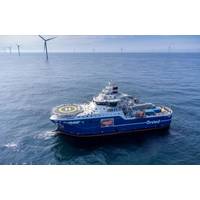
Louis Dreyfus, MaDfly Launch ROV in Open Sea Operations
.The operation was conducted on the service operation vessel (SOV) Wind of Hope next to the Hornsea 2 wind farm in England, marking a significant advancement in offshore inspection technologies.The innovative in-water survey was performed by MaDfly’s expert team under the supervision of the classification society Bureau Veritas.According to LDA, this operation was unique in that it was conducted entirely at sea, without requiring the vessel to halt its ongoing operations or return to port.Despite challenging conditions, including swells of up to two meters, MaDfly’s ROV technology enabled the
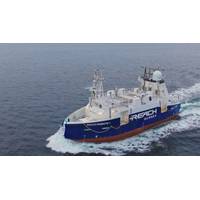
Kongsberg delivers first REACH REMOTE USV
milestone through collaboration between Kongsberg Maritime, REACH SUBSEA ASA, Massterly, and Trosvik Maritime.Designed to revolutionise offshore operations, the REACH REMOTE 1 is packed with cutting-edge KONGSBERG technology. Its delivery follows a programme of intensive sea trials, overseen by classification society Det Norske Veritas (DNV) and the Norwegian Maritime Authority.Its initial mission will be to conduct underwater surveys off the coast of Haugesund, Norway, but its potential applications extend far beyond this. The second vessel, REACH REMOTE 2 is now expected to begin sea trials.Bjø
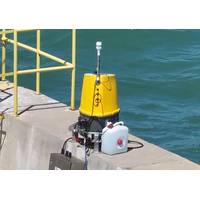
Fugro Floating Lidar Gets Classification Nod
Classification society DNV completed the first-ever verification of a stage 3 floating LiDAR (Light Detection And Ranging) unit in Latin America, a Fugro SEAWATCH buoy, equipped with a Zephir ZX300M LiDAR unit. The floating LiDAR system’s performance was evaluated against a reference LiDAR unit onshore to verify its performance and accuracy in measuring wind and metocean data under various offshore conditions off the coast of Porto do Açu, in Rio de Janeiro, Brazil.The verification results mark a significant milestone for offshore wind in Latin America, demonstrating a more economical

DNV Clears Ocean Infinity’s Remotely Supported Vessel Operations
Ocean Infinity has received a Statement of Compliance (SOC) from DNV for its remotely supported vessel operations, marking industry's first such achievement.The approval from DNV, the world's leading classification society, establishes Ocean Infinity as the industry's first organization to reach the required standard of technology and operations for large vessels, and permits the beginning of onshoring marine related tasks and activities.The significance of this achievement was underscored at SMM in Hamburg, the world's largest maritime trade fair, where DNV formally presented the
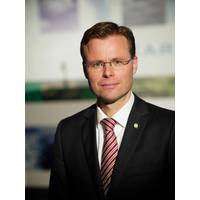
DNV to Publish New Offshore Rules and Standards in July
Classification society DNV said it is set to publish its new set of rules and standards for the offshore industry.The new rules, which cover several segments, including underwater systems and installations, offshore units, diving systems, structural design, and drilling systems, will be published in July and enter into force on January 1, 2025. They have been developed with extensive industry feedback, undergoing an external hearing process before their publication and entry into force.“The offshore sector is one of the most innovative in the world,” said Torgeir Sterri, Director of
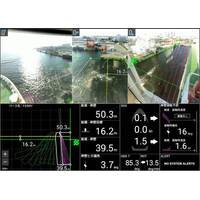
Furuno's Berthing Aid System Receives ClassNK's Endorsement
Japanese classification society ClassNK has granted its Innovation Endorsement for Products & Solutions to a Berthing Aid System developed by Furuno.Furuno's Berthing Aid System displays the distance and angle between the ship and the quay to assist in berthing operations.The Berthing Aid System uses LiDAR to calculate the relative distance and angle between the quay and hull, and displays superimposed images for situational awareness. The system aims to improve safety during berthing by measuring and visualizing the positional relation between the quay and ship, which was previously measured
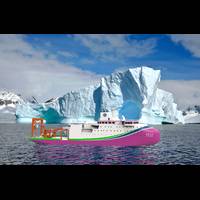
ABB to Supply Ice-Classed Azipod Propulsion for Research Vessel
speed of two knots. The ship is designed to operate both bow first and astern in ice with an enhanced Polar Class 4 (PC4) ice-breaking level. With a capacity of cruising range of 15,000 nautical miles, it can accommodate a crew of 80 people.The new research vessel will be equipped to China Classification Society (CCS) LEVEL 2 notation standards on digitalization and fulfill Underwater Rated Noise SILENT A notation. SILENT A notation covers vessels that are acoustically sensitive, whose underwater noise emissions are controlled to benefit data capture and minimize ecological impact. The criteria are
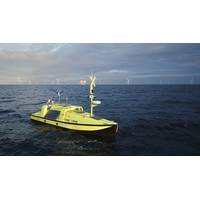
Ørsted Unveils USV for Met-ocean Measurement
initiated a serial production based on its successful prototype named Hugin USV. The prototype has been operating in Danish and Norwegian waters and has reportedly experienced waves up to nine meters in the North Sea. Hugin USV also achieved type validation as a floating LiDAR system by Norwegian classification society DNV, allowing it to be used for commercial operations related to wind farm development.As was the case for the prototype, the new USVs will be constructed by Danish shipbuilder Tuco Marine Group, and the USV control system is delivered by the innovative Norwegian company Maritime Robotics
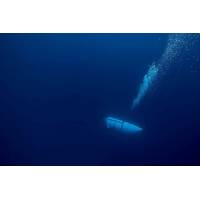
As the Clock Ticks on the Titan Sub, an Expert Explains What Safety Features a Submersible Should Have
, the engineering and regulation of deep-sea submersibles remains somewhat uncharted territory. And since the Titan operates in international waters, it is technically free from governance by any single nation’s regulations.In this case, most submersible designers would elect to have a classification society certify the vessel’s design. OceanGate made the conscious decision to refuse to do this for the Titan.Seaworthiness of submersiblesWhen we talk about the “seaworthiness” of a marine vessel, we are essentially asking if it is fit for purpose, safe to operate, and compliant
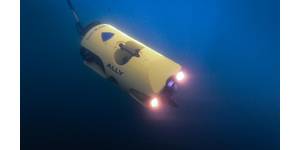
 February 2025
February 2025





